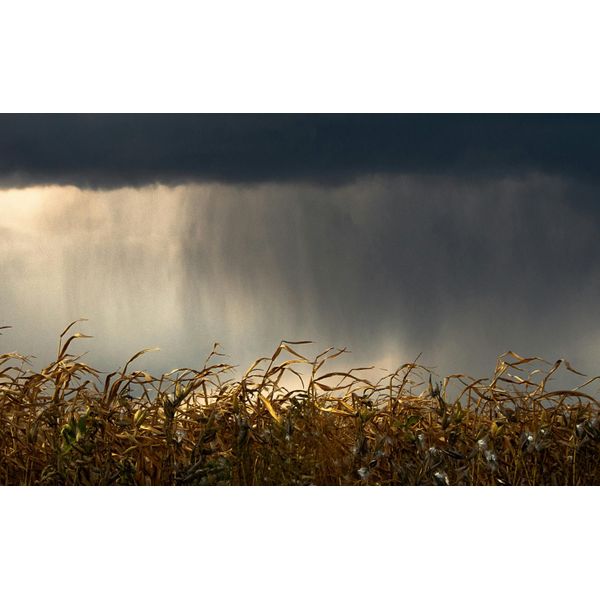

- Home
- Companies
- RSK ADAS Ltd
- News
- Changing Weather Patterns: Adapting How ...
Changing Weather Patterns: Adapting How We Farm
The shifting dynamics of global weather patterns have brought a new layer of complexity to agricultural practices. If you’re in farming, you’ve likely noticed the growing unpredictability of our seasons. Addressing these shifts requires a combination of innovative strategies, practical adaptations, and long-term planning. Our way of life is being tested by increasingly erratic weather patterns. This isn’t just about adapting to rain, sun, or snow anymore; it’s about rethinking everything from the ground up, including the infrastructure that supports our farms.
Working on the family dairy farm and managing a sheep enterprise in North Wales, alongside my ADAS role, I’ve experienced firsthand how climate shifts have impacted our daily operations and long-term strategies. How changing weather patterns have affected farms across the country is widely varied but there are a number of actions we can take and investments we can make to better prepare ourselves.

Met Office data suggests that the annual temperatures in the UK have risen by nearly 0.9°C over the past few decades, with all ten of the warmest years since 1884 occurring after 2002. These changes vary regionally, with southern and eastern England experiencing the most significant temperature increases. Whilst not as extreme, rainfall patterns are shifting too, with the country experiencing about 5% more annual rainfall than mid-20th-century averages. In addition, research shows that extreme rainfall events have surged by 17%, creating challenges such as flooding, soil erosion, and infrastructure damage.
Sunshine has also shown regional inconsistencies. 2024 was a dull year and while the east of the country experienced an increase in sunshine duration, regions such as southwest Wales and northern Scotland, did not receive an equal share. For us on Anglesey, we’ve experienced lower maize yields (along with the challenges of harvesting it) and our grass silage quality is down. These combined changes are rewriting the rules for how we farm, forcing us to adapt our methods and infrastructure to remain productive.
The ripple effects of these changing weather patterns are broad and far-reaching. Feed supplies, water availability, infrastructure integrity, and even the mental health of those working the land are all affected as we try to navigate the unpredictability. Droughts disrupt natural water sources, while flooding contaminates supplies. Managing water resources effectively is critical, especially in areas reliant on wells or streams. On our farm, we rely on a borehole for livestock, but during dry spells, we’ve had to supplement with mains water, which of course incurs additional cost. Rainwater harvesting has helped us bridge the gap, but it’s not a complete solution.
Storms and heavy rainfall are wreaking havoc on our infrastructure, damaging fences and barns, which takes not only time but also money to repair. Earlier this winter, Storm Darragh took down several trees on our property and damaged numerous buildings, resulting in days of repairs and additional costs. Local farm builders are often inundated with similar jobs, a testament to the widespread nature of these challenges as many of my neighbouring farms suffered similar damage to their sheds, barns and outbuildings. The strain isn’t limited to physical assets; warmer, wetter conditions have become breeding grounds for parasites, pests and diseases. Liver fluke in livestock and blue tongue disease are becoming more common, demanding increased vigilance and preventive measures.
Soil health is another critical area – intense rain erodes topsoil, while prolonged wet periods waterlog fields, making them unsuitable for planting. Conversely, drought conditions reduce soil moisture, further complicating crop establishment. Maintaining soil health has never been more critical, as it underpins the resilience and productivity of the farm. The management of crops, livestock, and resources becomes more challenging when weather patterns deviate from expectations, forcing constant adjustments and disrupting carefully planned schedules.
The challenges posed by changing weather patterns demand proactive solutions, and over the years, I’ve come to understand that investment in farm infrastructure isn’t merely about addressing immediate concerns. It’s a forward-thinking process that ensures resilience and long-term sustainability in the face of unpredictable environmental changes.
Livestock HousingExtended housing periods due to wetter springs and autumns mean we need more bedding, greater feed storage, and increase slurry capacity. In turn, this creates the need for better ventilation, given that increased air flow is essential to mitigate respiratory diseases in housed livestock. To help combat this, we’re looking into installing positive pressure tube ventilation systems, cyclone fans and adjustable side curtains to offer more effective airflow control.
The use of insulated roofing materials should be considered, especially where cattle are housed during the summer months. Translucent polycarbonate sheets are becoming more popular and can be highly beneficial. These sheets not only keep buildings cooler during increasingly frequent summer heatwaves but also allow for UV protection, better natural lighting, creating a more comfortable and productive environment for both livestock and workers. Minimising excessive heat will help reduce heat stress and behavioural changes in livestock, especially cattle.
One lesson I’ve learned on our own farm is that you can never have too much space when it comes to livestock housing. I’ve never met a farmer that’s said, “we made that shed too big” or “that gateway too wide”.
As any farmer knows, rainwater harvesting presents a cost-effective solution that helps to minimise reliance on costly mains water. Adequate storage is crucial, typically about a month’s capacity helps to balance both cost and practicality. However, the focus should be more about capturing rainwater during very heavy rainfall and carrying that over to drier periods. This is especially true for operations such as spraying when peak rainfall is rarely at the time of peak demand. Including filtration and treatment systems, such as UV, may be necessary to ensure the appropriate water quality for livestock.
Feed and Forage StorageAs with any element of farming, unpredictable weather demands innovative and adaptable solutions. In relation to feed storage, double-ended silage clamps have become an invaluable tool on many farms across the regions. Double-ended silage clamps allow for access to older feed reserves while simultaneously filling the clamp from the other end, as a result this ensures efficient use of resources. Additionally, diversifying forage crops has proven invaluable in addressing the challenges posed by erratic weather patterns. By incorporating multi-species swards with deeper-rooting plants, we are able to sustain productivity during prolonged dry spells. These crops not only provide reliable feed for our livestock but also improve soil structure and resilience, helping to mitigate the effects of both drought and intense rainfall.
Slurry and Manure ManagementAs mentioned already, extended livestock housing periods and bouts of bad weather inevitably generate more slurry. Roofing open areas, can help to reduce runoff and associated storage demands. In many ways, these upgrades have become an essential investment in the resilience and sustainability of farms up and down the country.
Covering slurry stores can be highly effective for reducing rainwater dilution and ammonia emissions as well as enhancing environmental compliance and reducing the associated cost of spreading, however it is worth noting that reducing dilution results in higher dry matter slurries, which are difficult to both mix and handle when covered. For solid manure, moving to roofed manure stores with contained drainage systems, helps to complying with stricter environmental regulations. These investments, while costly, provide long-term benefits in nutrient management and compliance.
Drainage SystemsDeteriorating land drainage systems are failing to cope with extended periods of wet weather and intense rainfall. Working to full capacity original schemes are likely to be adequate most of the time. A small delay in the time taken to return soils to field capacity will simply have to be tolerated and is unlikely to have major impacts on crop performance. However, most schemes are anything from 40 to 200 years old, some older schemes have been damaged, or tiles become misaligned naturally over time, some newer schemes have failed due to the materials used, and permeable fill migrates away from the drain through deep cultivations. The most common problems we encounter are blocked outfalls as ditches have not been cleaned, and schemes designed for mole drainage where the land has not been moled for many years, resulting in water failing to reach the drains. Upgrading drainage schemes can be justified in some circumstances, repair and maintenance of existing systems plays a crucial role in preserving soil integrity, minimising erosion, and preventing waterlogging that could compromise yields and increase nitrous oxide emissions, further contributing to climate change.
Leveraging Technology and CollaborationTechnology has become an ally in this battle. Policies that promote manure sharing between livestock and arable farms can optimise nutrient distribution and reduce risk of diffuse agricultural pollution. Grant schemes for infrastructure upgrades, including water storage and drainage improvements, provide financial incentives for farmers to access long-term sustainable solutions in an ever-changing environment.
Above all else, collaboration is key. Farmers, researchers, and policymakers must work together to develop sustainable solutions. Initiatives, grants and subsidies for sustainable infrastructure improvements are essential to create pathways for resilience across the agricultural sector.
The Road AheadThe impacts of changing weather patterns on agriculture are profound and multifaceted and the future of farming will be shaped by our ability to adapt. For many, this means embracing change, investing in resilient infrastructure, and staying informed about the latest advancements. The challenges are real, but so are the opportunities to innovate and build a sustainable future for agriculture.
As I often say, preparing for the worst while hoping for the best is the only way forward. By rethinking how we manage resources, plan infrastructure, and mitigate risks, we can navigate the uncertainties of a changing climate and ensure the long-term viability of our farms.
